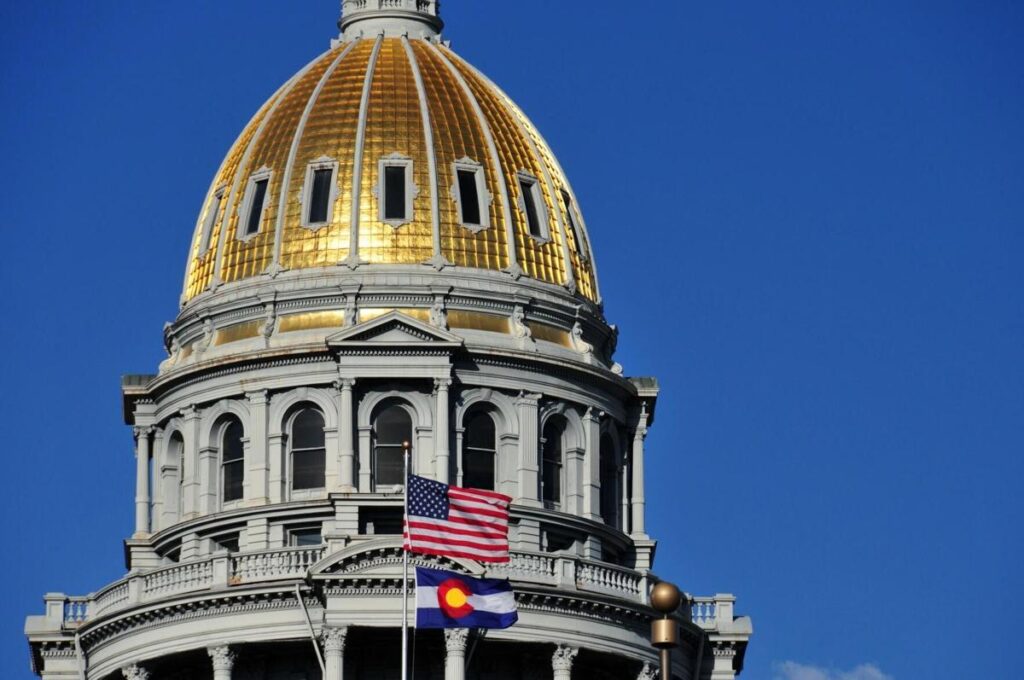Expect a warmer, drier summer in Colorado, water experts say
A mostly warm and dry winter likely portends a similar scenario for the summer, according to water experts who spoke at a meeting of water providers and state officials.
Meanwhile, the spring has proven to be interesting, with three significant weather events in the past month — a snowstorm between May 5 and May 7 that at least slowed some of the snowmelt, tornadoes over the past weekend and wild temperature swings during mid-April.
Allie Mazurek, an engagement climatologist with the Colorado Climate Center, told the Water Conditions Monitoring Committee, which meets monthly, that December through April has been the fourth driest, and western Colorado had seen the driest conditions on record.
With the exception of November, which was the fifth wettest on record, the state saw lower than average precipitation last winter, Mazurek said.
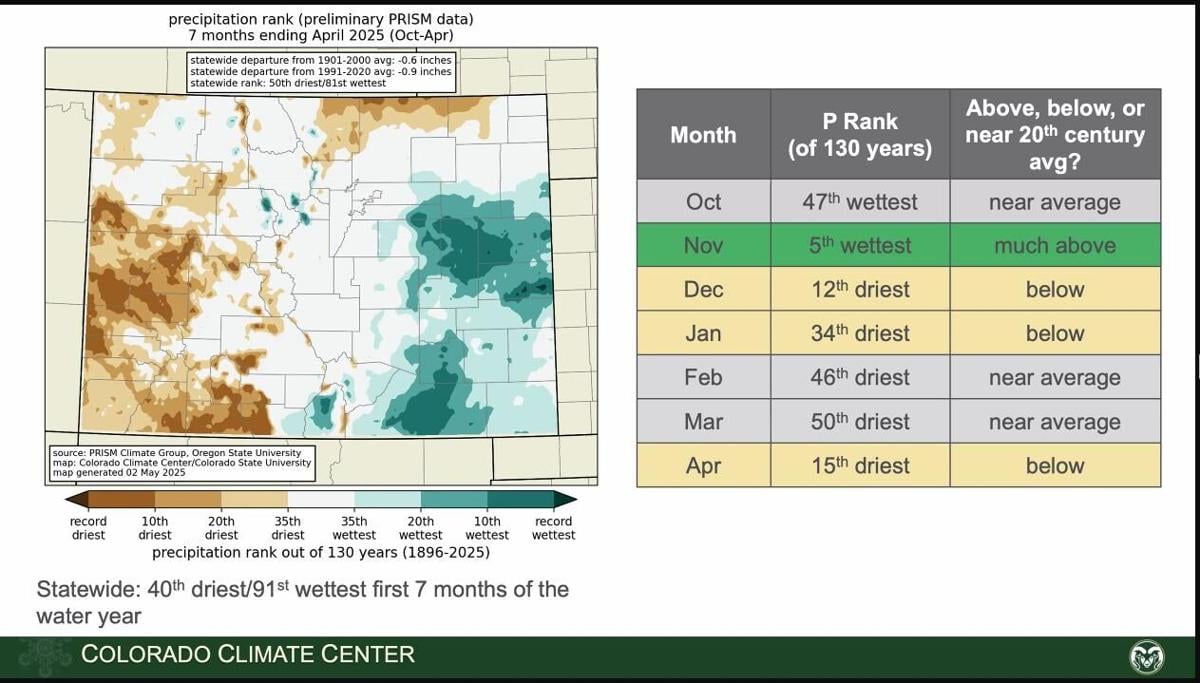
Precipitation across Colorado from Oct. 1 through April 30 (Courtesy: Colorado Climate Center)
April was also drier than average, and Mazurek said that’s the seventh year in a row that had happened.
While the tornadoes last weekend damaged several parts of the Eastern Plains, it also brought beneficial moisture to northeastern Colorado. May is usually the wettest month for the Eastern Plains, with two to three inches of rain during the month, but, until the past weekend, it had been drier than normal, she reported.
The early May snowstorm brought more snow to parts of southern Colorado than they had gotten all winter, Mazurek said, including the Sangre de Cristos mountains. The Front Range and the lower Arkansas River basin also saw beneficial moisture from that storm, she said.
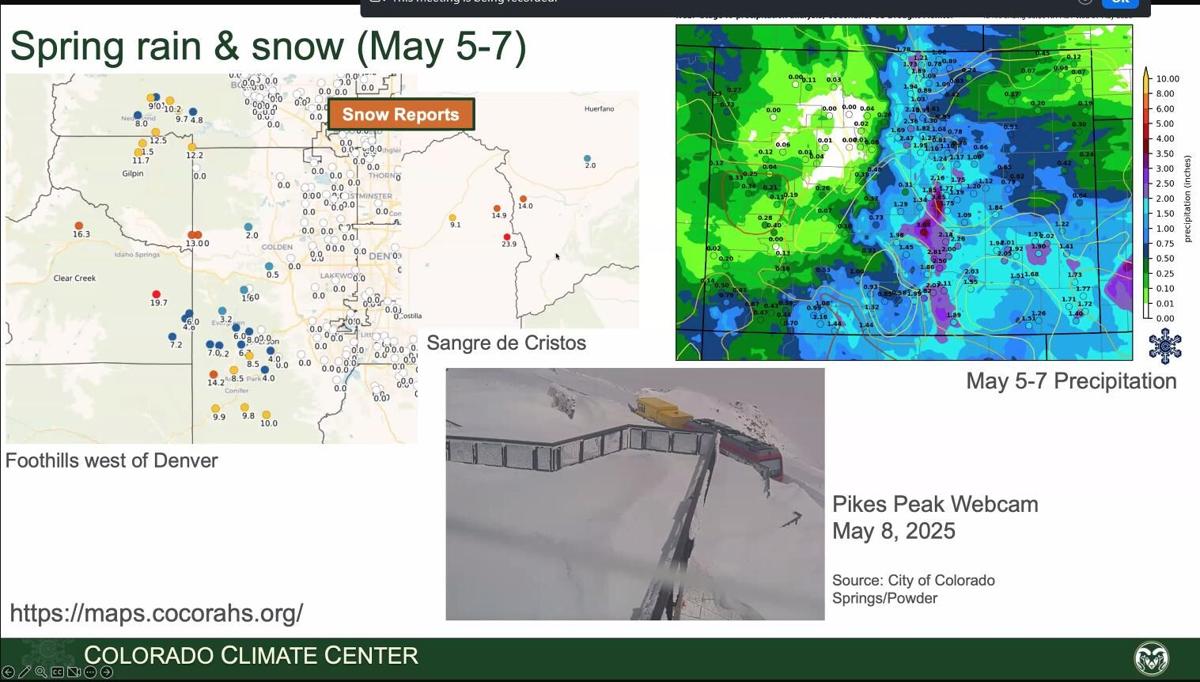
The impact of a May 5-7 snowstorm in Colorado; some parts of the state saw more than a foot of snow. (Courtesy: Colorado Climate Center)
Precipitation in the past week has also helped the Western Slope, where it’s facing more drought conditions, but even that rainfall wasn’t enough to be a “drought-buster,” Mazurek said.
And while the storms last Sunday brought a healthy dose of rain, it’s not been enough to close the gap for northeastern Colorado.
The wild temperature swings took place during the week of April 13, when temperatures reached into the mid-90s in southeastern Colorado and mid-80s along the Front Range. Usually, once temperature get that high, they stay there, she said. But then came a snow event on April 18 that plummeted temperatures into the 20s.
That’s pretty uncommon, Mazurek said, adding, “We don’t get that warm and (then) drop.”
The third major event was last weekend’s tornadoes, which produced some of the highest winds on record, with two gusts reported in Phillips County of more than 75 mph.
The drought picture is deteriorating, Mazurek said, primarily on the western slope. Meanwhile, drought conditions are growing on the Eastern Plains.
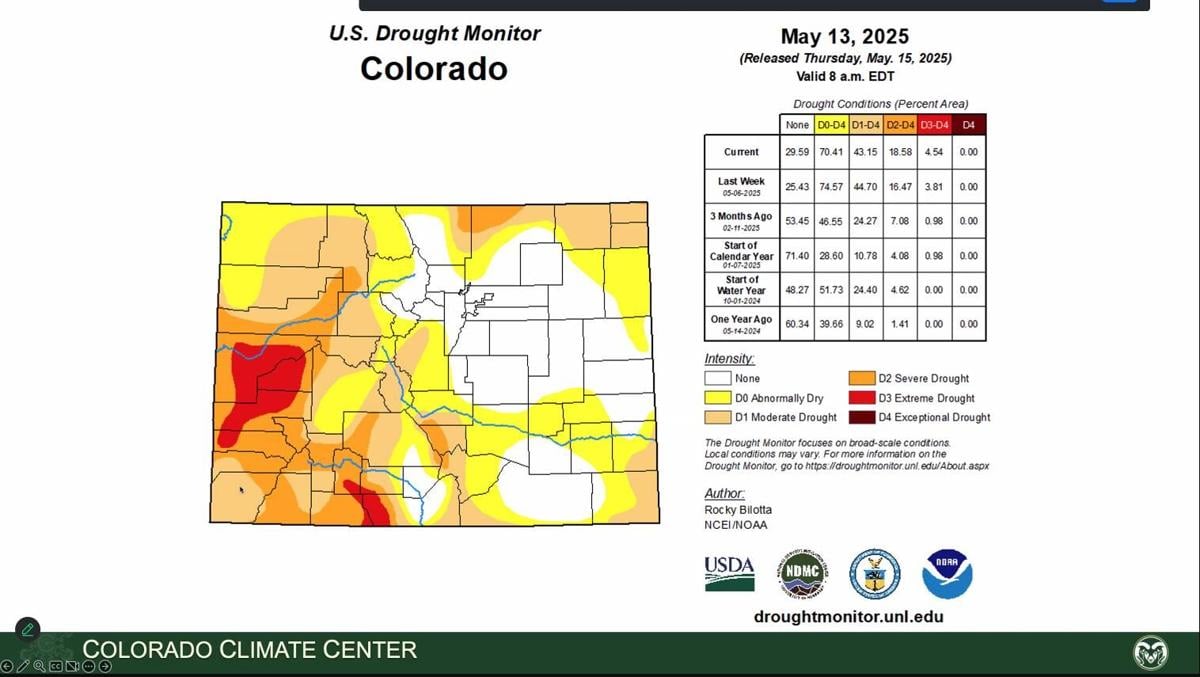
Colorado drought conditions. (Courtesy: US Drought Monitor)
The end of May to early June is forecasted to be warmer than average, especially for western Colorado, with near to below normal rainfall, she said.
The good news is that there could a chance of above average rain in the south central mountains, the San Luis Valley and southwestern Colorado.
Up until recently, the state has been in a La Niña weather pattern, meaning warmer and drier conditions, but that has now shifted to what Mazurek called “neutral conditions.” Those are expected to continue into the summer but in late summer and the fall she anticipates another La Niña situation.
She also noted the first seven months of the water year that started on Oct. 1 are among the top 10 warmest on record, and outside of the November snowstorm, the state’s precipitation has been below average.
The snowpack situation is not good, according to data provided by Brian Domonkos, a hydrologist with the Natural Resources Conservation Service of the U.S. Department of Agriculture.
The state’s snowpack, as of this week is at 58% of median, up from 51% just five days ago, before the weekend storms, and that meant the snowpack melt slowed down just a bit.
Snowpack conditions have been better in the northern half of the state, and, following a trend of several years, worse in the southern half, with the lowest recorded at 13% in the Rio Grande basin.
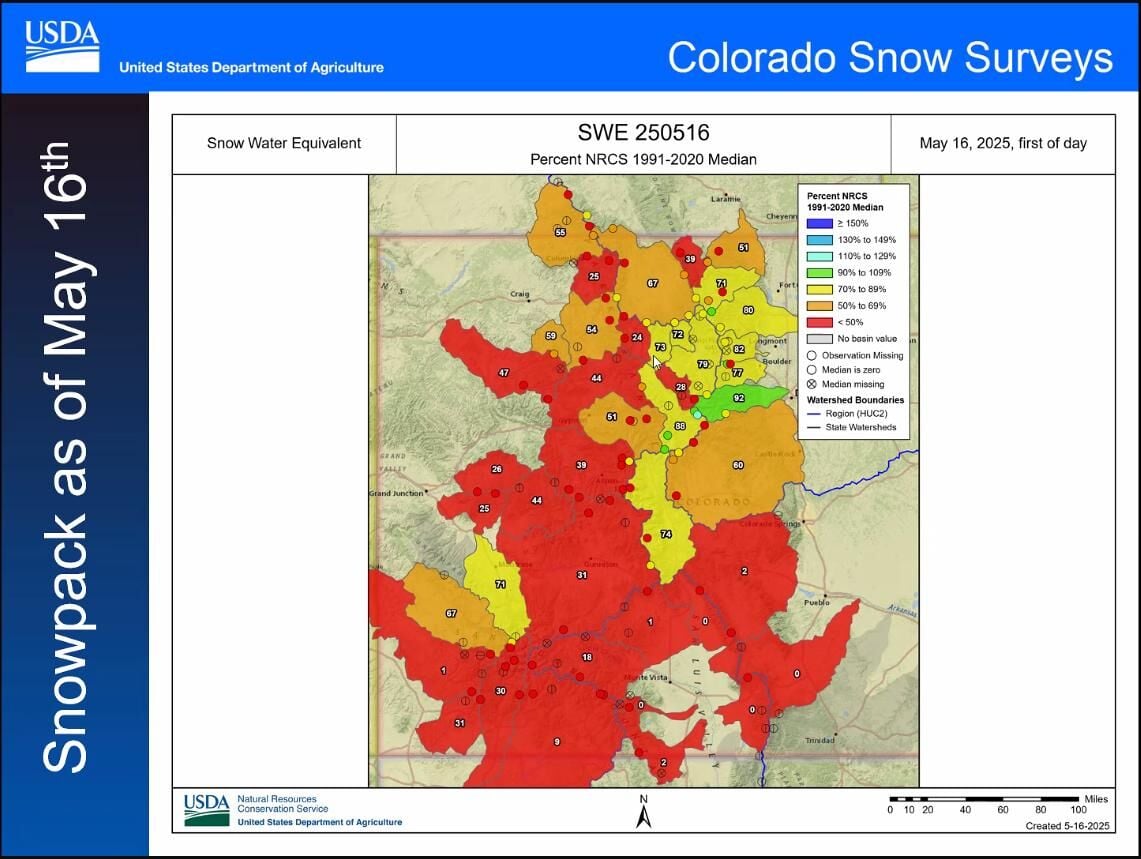
Snowpack levels around the state as of May 16, 2025. (Courtesy: Natural Resources Conservation Service, USDA)
But snowpack deteriorated pretty quickly this year because of warmer temperatures — the state’s snowpack had stood ta 93% of median in March and 70% as of April 22.
Snowpack peaked about 11 days early this year, Domonkos said. When it’s closer to average, streamflows hold up longer, but below normal snowpack and early melt will probably lead to drier streams at an earlier date than normal, he estimated.
Future precipitation may bring good news to the Rio Grande basin, southwestern Colorado and the Arkansas River basin, all areas that have seen worse drought conditions in the past year.
The early May snowstorm brought an inch of precipitation across most of the state, a 4% increase.
“It wasn’t much of an improvement but we’ll take what we can get,” Domonkos said.
As to soil moisture — an indication of how well soil is holding its moisture — at eight inches it’s pretty good and at 20 inches below the surface soil moisture is showing improvements everywhere but in southwestern Colorado.
Domonkos anticipates all of the state’s major reservoirs would be in good shape, except for southwestern Colorado.
“Reservoir storage is pretty close to normal,” he said. “With runoff now in full swing, reservoirs will hit capacity.”

Reservoir levels across Colorado (Courtesy: Natural Resources Conservation Service)
Colorado Politics Must-Reads:















